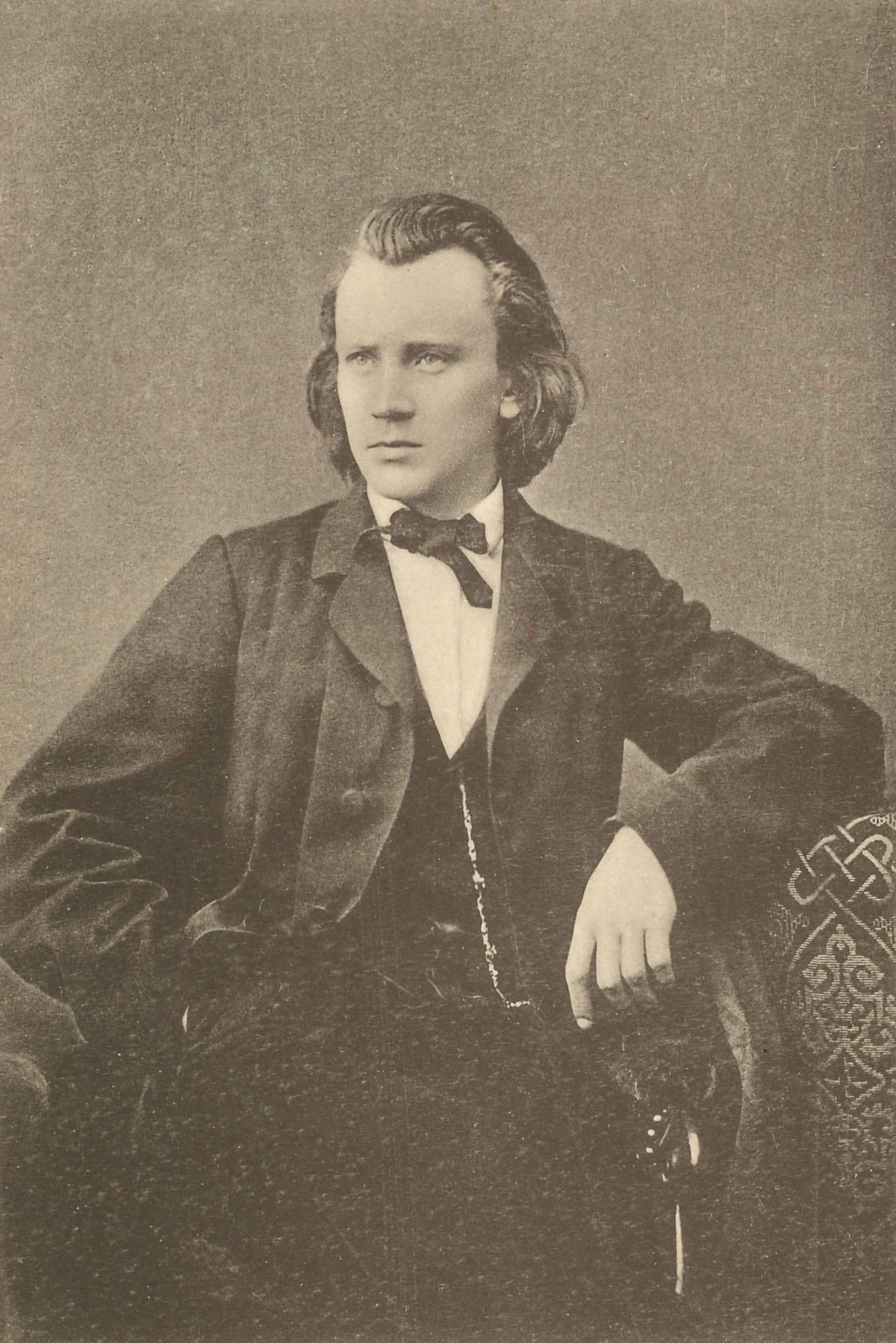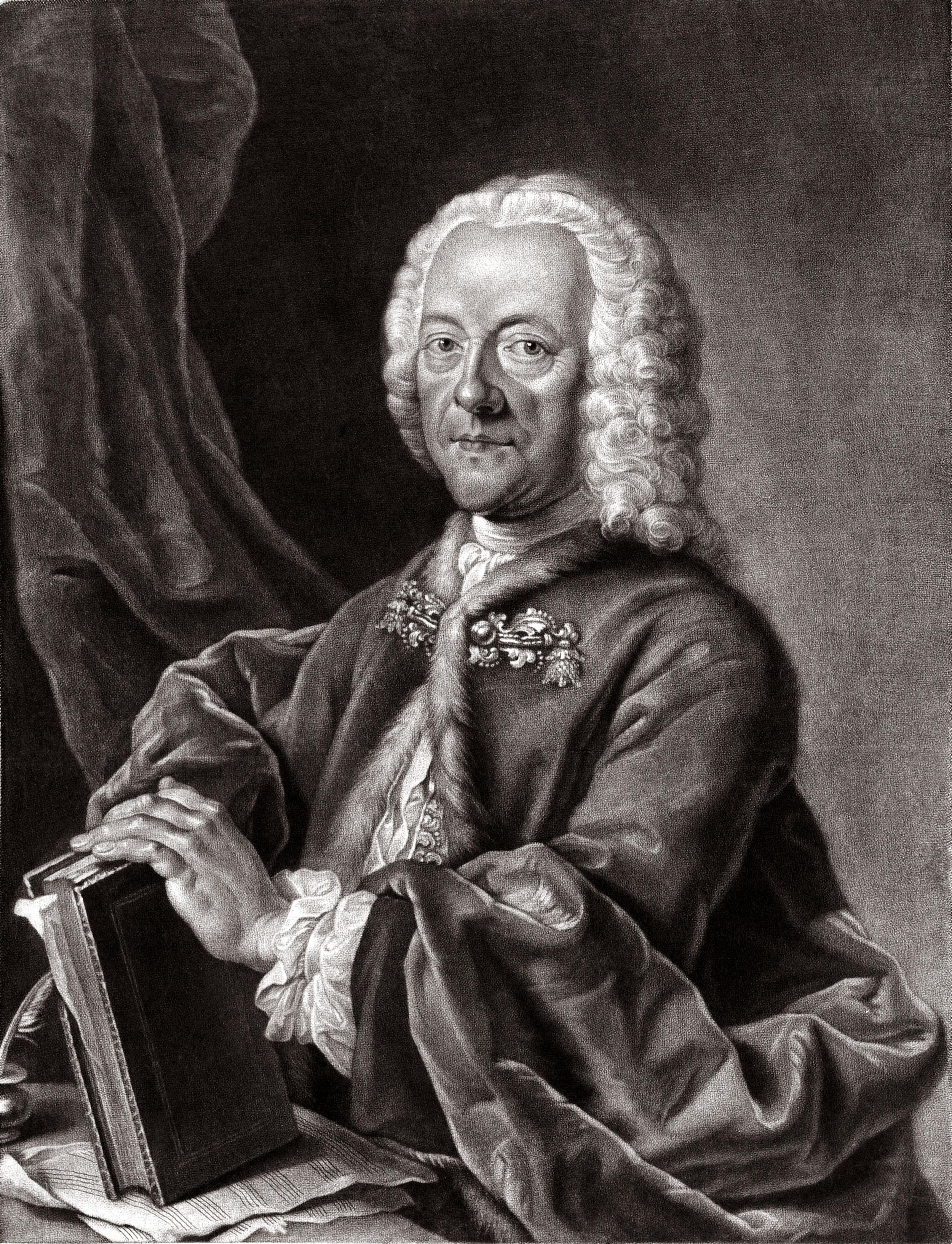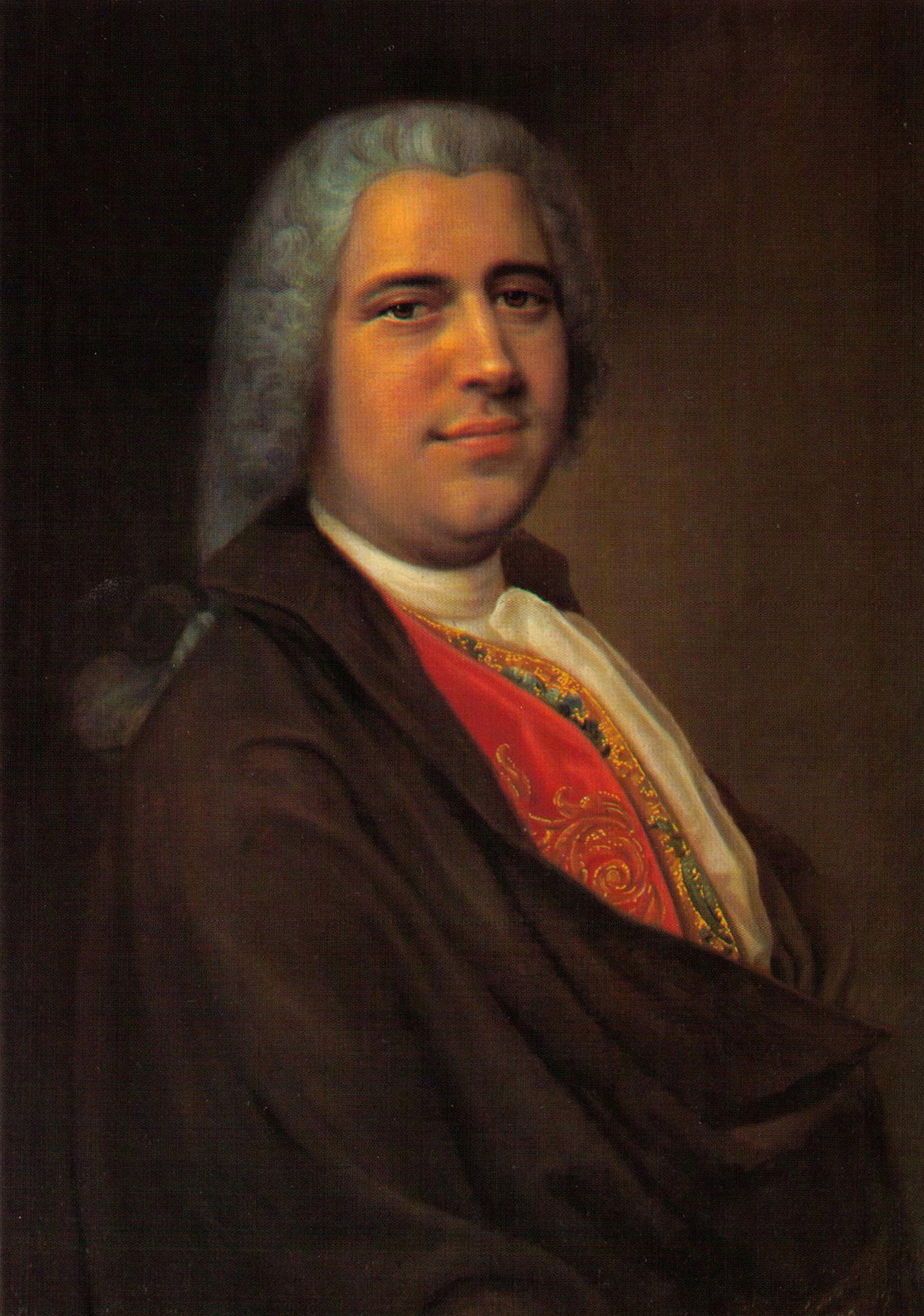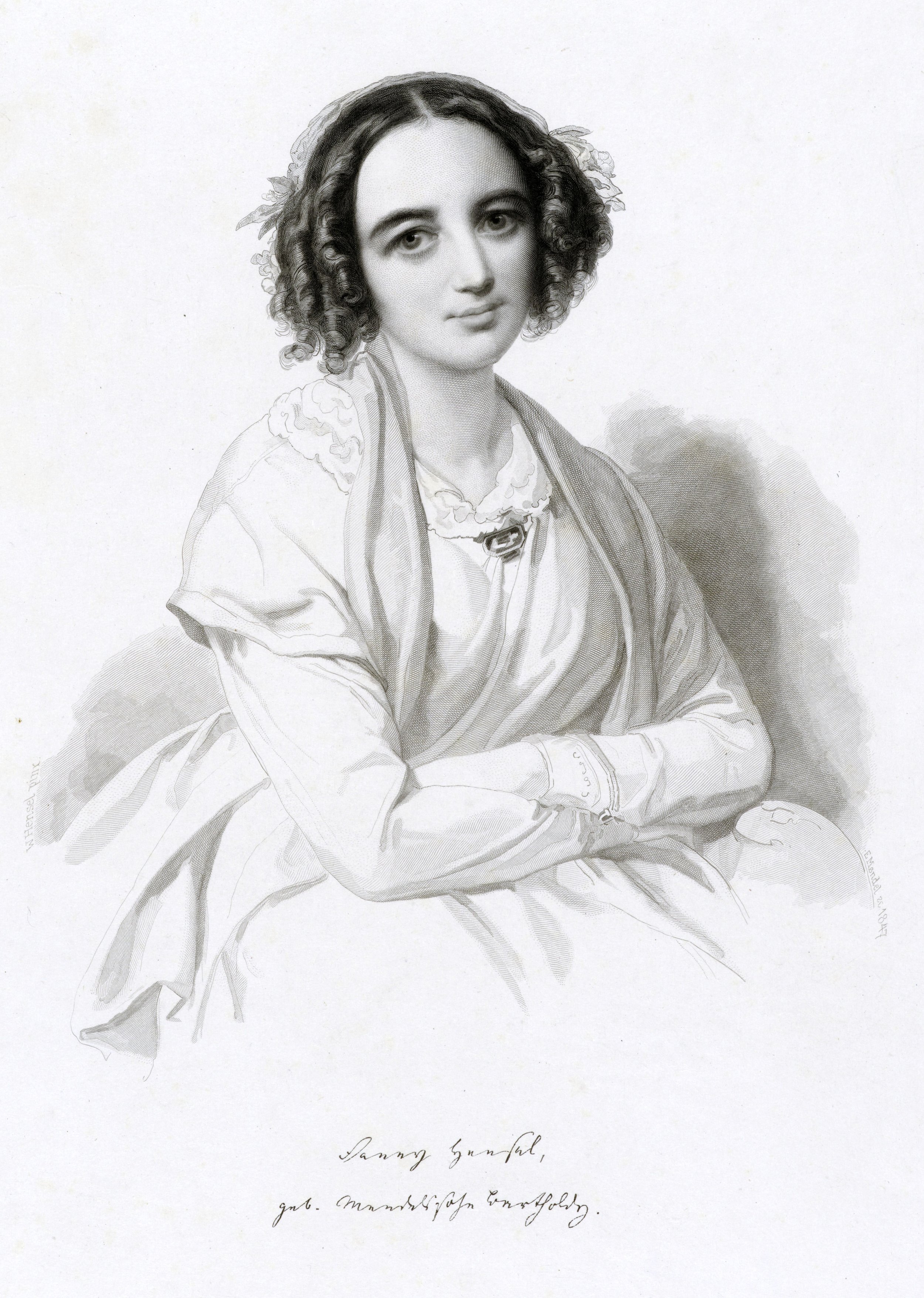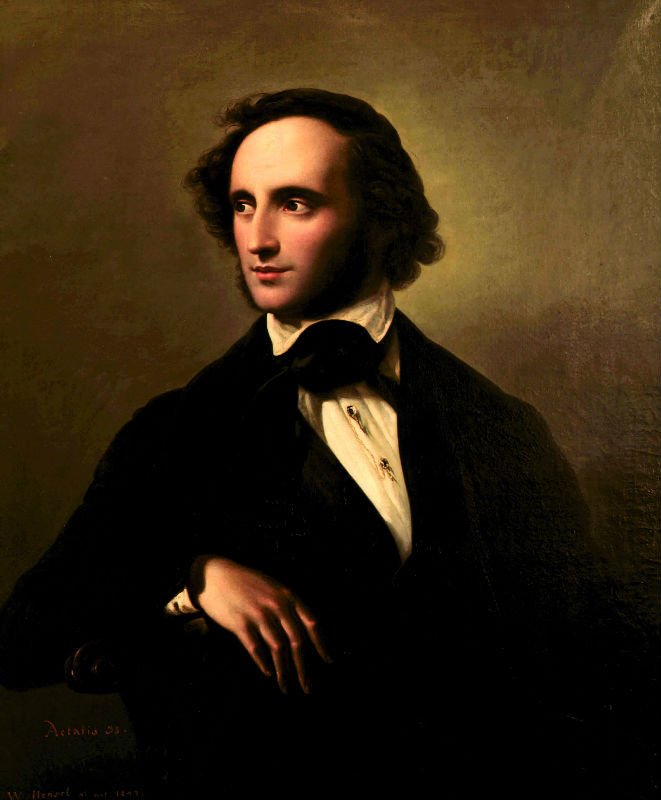From Alamy.com
By Unknown author (The photographer is unknown and not mentioned in the source.) - Max Kalbeck: Johannes Brahms. II Erster Halbband 1862–1868. Deutsche Brahms-Gesellschaft m.b.H., Berlin 1908., Public Domain, https://commons.wikimedia.org/w/index.php?curid=20384507
Hamburg is the second largest city in Germany.
The Brahms Museum is located in a 1751 merchant’s house since 1971 and it is staffed by volunteers. This Museum contains a magnificent marble bust of Brahms as well as the square piano on which Brahms gave piano lessons. This piano was manufactured in Hamburg in 1851 by the firm Baumgardten and Heins. The Museum deals with the time that Brahms spent in Hamburg, the first three decades of his life. The Museum contains, among other items, some if his personal items, letters, photographs, sheet music, concert programmes and Brahms’ writing desk.
Brahms was born near the Museum and his birthplace was destroyed by bombing in 1943.
Ostromecko, Old Palace, square piano by Carl Christoph Günther from ca. 1835-40, Musical Instrument Collection of Andrzej Szwalbe, inv. no MOK-VII-FZ-037 (PN-VI-60-86): http://fortepian.instrumenty.edu.pl/en/pianos/show/piano/47
By Pko - Own work, CC BY-SA 4.0, https://commons.wikimedia.org/w/index.php?curid=116779274
From Alamy.com
Telemann Museum, Composers’ Quarter, Hamburg
By Karlderkahle - Von Karlderkahle am 2. Juni 2011 in die deutschsprachige Wikipedia geladen., Copyrighted free use, https://commons.wikimedia.org/w/index.php?curid=15468820
By Valentin Daniel Preisler - This file has been extracted from another file, Public Domain, https://commons.wikimedia.org/w/index.php?curid=49314485
This museum was opened in 2011 and it is in a historical building in the Peterstrasse where Telemann lived and worked from 1721 until his death in 1767. Telemann was a composer, musician, music director, opera conductor and author.
The museum has a recreation of the interior of St Catherine’s Church in Hamburg, this was one of the churches where Telemann worked. Telemann is buried in the Church of St John’s Monastery.
The museum not only displays his importance to Hamburg musically but also discusses his passion for his garden in Hamburg. He had a well-loved flower garden and he asked for plants from all around the world. In 1754, Handel sent Telemann a crate of “the best plants in all England, having fist secured a list of Telemann’s requirements”. Apparently, Telemann said “I am insatiable where hyacinths and tulips are concerned, greedy for ranunculi and especially for anemones” he once wrote in a letter. On the website www.concert-diary.com it states, “his garden was so famous that in 1742 a list of his plants was collated and has survived to this present day”. The cultivation was rather in vogue at the time when Telemann was living.
www.wikipedia.org/wiki/Telemann_Museum
www.concert-diary.com
Johann Adolph Hasse
By Balthasar Denner (1685-1749) [1] - http://www.komponistenquartier.de/die-museen/johann-adolf-hasse-museum/, Public Domain, https://commons.wikimedia.org/w/index.php?curid=17247554
Hasse is on the most important European opera composers of the 18th century, he was a pivotal composer in the development of opera seria. He began his career at the Hamburg Opera House. The museum in the Hamburg Composers’ Quarters shows Hasse’s early years in Hamburg to his later career internationally.
Hasse came from a musical family, they were church organists, and he received his first music lessons from his father. At the age of 19 he was a tenor singing with a Hamburg opera company. By the age of 25 he was living and studying opera in Naples. During the period 1731 to 1764 Hass was Kapellmeister at the court of Dresden and this post allowed him the freedom to travel and accept commissions throughout Europe. The Wikipedia article concerning the museum states “The presentation continues with his career as a prominent composer. He and his wife, the opera singer, Faustina Bordini, gained international prestige and played respected roles at the European courts and theatres”.
However, in his later years he was not as influential as he had been earlier. According to one opinion, his music lacked depth since Hasse believed that melody and beautiful singing were the most important aspects of music. Gluck began reforming opera in the 1760s and Hasse was one of the composers he reacted against. It is thought that Hasse composed more than 1500 works, many of which were destroyed in Frederick the Great’s siege of Dresden in 1760, although a number have survived.
Included in the museum are libretti from Hasse’s operas, costumes, set designs and a replica of a Baroque opera stage.
By Ymnes - Own work, CC BY 4.0, https://commons.wikimedia.org/w/index.php?curid=73154530
www.findagrave.com/memorial/21994215/johann-adolph-hasse
en.wikipedia.org/wiki/Johann_Adolph_Hasse
en.wikipedia.org/wiki/Johann_Adolph_Hasse_Museum
www.classical.net/music/comp.lst/acc/hasse.php
Gustav Mahler Museum Hamburg
This museum, opened in 2018, is devoted to Gustav Mahler. Mahler was resident in Hamburg from 1891 to 1987 as an opera conductor. He was Kapellmeister at the Hamburg State Theatre. His work as an opera conductor in Hamburg brought international fame to the city and to the Hamburg State Theatre. During Mahler’s time in Hamburg he composed his second and third symphonies and also some sons.
By Ymnes - Own work, CC BY 4.0, https://commons.wikimedia.org/w/index.php?curid=73154512
Mahler 1896 by unknown - https://mahlerfoundation.org/mahler/chronology/1892-1897-hamburg/year-1896/, Public Domain, https://commons.wikimedia.org/w/index.php?curid=114383095
The exhibits in the museum includes a bike from 1895 as Mahler was a keen cyclist. There is also a player piano made by Welte-Mignon, which as the Wikipedia article states “which reproduces the composition accurately in the way Mahler intended it to sound”. Mahler was a man of many interests, and the museum contains letters, books, reviews and announcements for his concerts.
en.wikipedia.org/wiki/Gustav_Mahler_Museum
https://www.gustav-mahler-vereinigung.de/gustav-mahler-in-hamburg.html
By Wilhelm Hensel; Eduard Mandel - http://resolver.sub.uni-hamburg.de/goobi/PPN663944058, Public Domain, https://commons.wikimedia.org/w/index.php?curid=90557653
By Wilhelm Hensel - http://www.hetorgel.nl/d2010-06b.html, Public Domain, https://commons.wikimedia.org/w/index.php?curid=25946410
Fanny and Felix Mendelssohn Museum
This museum was opened in 2018. Fanny and Felix Mendelssohn were close, helping each other with their compositions. According to Wikipedia “The museum focuses on their lives, including their childhood and the circumstances in which people of Jewish descent lived and worked within the German culture of the time. In her lifetime, Fanny (1805–1847) wrote the compositions to more than four hundred songs. Felix (1809–1847) was younger than her and had composed since he was an adolescent. Their mother taught them to play the piano in their early years”.
One of the central items of the museum is a fortepiano which celebrates music making, something that was the primary focus of their lives.
By Ymnes - Own work, CC BY 4.0, https://commons.wikimedia.org/w/index.php?curid=73154259
Fanny was born in Hamburg in 1805 and Felix was born in the same city in 1809. The family moved to Berlin in 1811.
en.wikipedia.org/wiki/Fanny_Felix_Mendelssohn_Museum
C.P.E. Bach Museum
By Franz Conrad Löhr - http://www.bpk-images.de/?18671877727020631900&MEDIANUMBER=00092233, Public Domain, https://commons.wikimedia.org/w/index.php?curid=44147555
This museum was opened on the 18th March 2015. C. P. E. Bach succeeded his godfather Telemann as the cantor and director of the five main churches of the city. Bach lived in the city from 1868 to 1788 and he was a very important part of Hamburg’s musical life. He was a very busy person as he was responsible for approximately 200 performances annually at these churches and he also had to compose music for a range of occasions. In addition, to this he organised public concerts and was often the soloist at these performances. In the museum information is provided on the characteristics of his music and his influence.
C. P. E. Bach died in Hamburg on the 14th December 1788 and he is buried in a vault in St Michael’s Church, Hamburg.
In this museum there is a clavichord which was C. P. E. Bach’s favourite instrument. This clavichord is situated in a reconstruction of a parlour of the period.
www.dw.com/en/hamburg-now-hails-classical-composers-with-a-street-of-museums
www.bach-leipzig.de/en/bach-archive/carl-philipp-emanuel-bach
By Ymnes - Own work, CC BY 4.0, https://commons.wikimedia.org/w/index.php?curid=73154450




